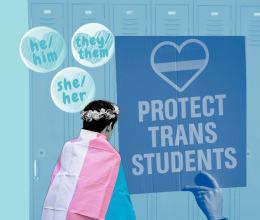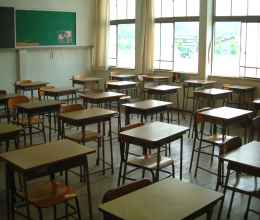By Scott Wittkopf, Forward Institute
Public education is about community. In fact, public schools are the heart of the community – and as goes a community, so go the public schools. Show me a community in distress, and I’ll show you a school district in distress. That fact is true whether the “community” is considered rural, urban, a state or the entire nation. As a community we invest in public education because every child requires, and deserves, an equal opportunity to learn the skills and knowledge to pursue what is meaningful in life. It is our responsibility as a community to provide for that equal opportunity through public education. The very future of our communities, large and small, depends on it.
This study, while focused on Milwaukee School Report Cards, tells us something critically important about what is happening in the Milwaukee education system. Our study of significant factors associated with Report Card Scores, why 2R charter schools appear to have higher Report Card Scores, and how publicly subsidized “opt-out” schools impact public schools has statewide implications. As Milwaukee now serves as the laboratory for education experimentation in Wisconsin and the nation, we can extrapolate what is happening in Milwaukee to examine the impact of such a system if it were to be expanded statewide – into rural districts like River Valley.
Summary of most significant findings
- MPS/2R raw scores – We need to take into account that 2R charter schools have lower truancy and student poverty rates. When we equalize for those factors, the difference becomes insignificant. This means that the 2R Charter school type is not creating higher scores.
- 2R/MPS Charters - We need to take into account that 2R charter schools have lower truancy rates and higher rate of fully licensed teachers. When we equalize for those factors, the difference becomes insignificant. This means that the 2R Charter type is not creating higher scores.
- MPS public/MPS Charters – We need to take into account that MPS public schools have higher disabled enrollment, teacher experience, and student poverty rates than MPS charter schools. When we equalize for these factors, we find that the difference becomes significant. This means that MPS public school Report Card Scores actually are higher than MPS charter schools.
2. The most significant factor in the Milwaukee School Report Card scores is habitual truancy (Truancy effect slope figure). We can explain almost the entire effect on Report Card scores by three significant factors – habitual truancy rate, student poverty, and the percent of teachers with at least five years of experience. It is important to underscore that “Percent of Teachers with 5 years experience” have the same positive effect with scores as student poverty has negative effect. The negative truancy effect is 3 times that of the teacher and student poverty effects.
3. The negative effect of truancy is equal across schools. No school type counters these effects through educational effectiveness.
4. The data presented in this study along with other cited research indicates a strong likelihood of student selectivity (“skimming”) by 2R charter schools. This factor creates perceived positive effects which are overstated and unrelated to school type.
5. We suggest that school and parental bias factors are theorized to have a negative effect on the students left behind by an opt-out system which functions as a new form of segregation based on prior student achievement, parental participation, and schools picking “desirable students.” (Power Point Slides on truancy)
- 9-year truancy trend – WI and MKE stable, as student poverty increases; 2R sees 50% decrease.
- Zip Code – Community level – 2R charters not characteristic of community school. 53210 – stark difference in truancy rate/report card score.
- 2012 – 2013 – Effects of truancy across all schools. No school type counters effect, only through selection.
The big picture presented in this study is consistent with a large body of research which tells us that these multiple levels of selection bias are occurring in “opt out” parallel school systems as in Milwaukee. It also tells us a great deal of how that system is fundamentally flawed, and that expansion of this type of system statewide would have devastating effects on community school districts like River Valley.
Connecting the dots
1. There is strong evidence that 2R charter schools have selection biases which reinforce each other, and have nothing to do with educational efficacy – confirming theorized “skimming” effects.
2. Recent published research (Dr. Kern Alexander, U of I, Journal of Education Finance, Fall 2012)[1] confirms what is now known from 20 years of Cognitive Science research[2] – that people make decisions based on deeply held values, beliefs, and cultural biases – not from best information. This is critical in understanding how ANY publicly subsidized, parallel education system is based on a false premise – that people will select a school based on educational effectiveness. This is false. In education decisions, as in economics, people do not behave as rational actors. Why is this important?
3. The system in Milwaukee is leading to selection bias on the part of schools and parents, which is causing predictably higher performing students to opt out of public schools for multiple bias reasons, leaving higher concentrations of higher needs student in the public schools.
4. Higher concentrations of higher needs students places more stress on a school, requiring more resources – which are not there because of funding required for the parallel, publicly subsidized schools which are skimming funding as well as students.
5. The cycle is now continuous as funding for higher needs, public school students continues to be cut. These are the schools in our most distressed communities which will be faced with closure, only to be replaced by 2R style charter schools which do not offer a better education for a more select group of students – leaving many behind.
This is becoming a vicious, downward spiral in Milwaukee. Current policy being debated would perpetuate this cycle through inappropriate use of School Report Cards. School Report Cards provide local schools with another rung on the educational ladder of success. They provide insights into what works, and what requires further development and investment to ensure educational opportunity for every child. Instead, there are policymakers who would have the Report Cards be used as a wrecking ball – to literally wreck public schools in our most distressed communities, and replace them with schools that do not provide equal opportunity for every child.
Policy Recommendations
1. The entire Milwaukee community (and the state of Wisconsin) should commit to a proactive, wide reaching truancy project. One place to start is the model program “Walking School Bus” which has been successful in getting kids to school in other urban areas.
2. A ten year plan to sunset the 2R charter and any publicly subsidized private schools. A 20 year experiment has cost hundreds of millions of dollars, and shown no real educational benefit or effectiveness beyond what is available in public schools.
3. Develop criteria for proper use of School Report Cards as another means for local districts to gauge successes and further needs – not as a wrecking ball.
4. Address the issue of inequitable funding in Wisconsin Public Schools in the face of increasing populations of high needs students.
5. The state needs to begin addressing the real issues facing communities in distress, as schools will follow.
[1] Alexander, Kern, “Asymmetric Information, Parental Choice, Vouchers, Charter Schools and Stiglitz”, From the Journal of Education Finance, Fall 2012
[2] Damasio, Anthony, “Descartes’ Error: Emotion, Reason, and the Human Brain,” Penguin Books, 1994







